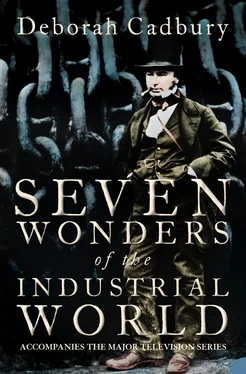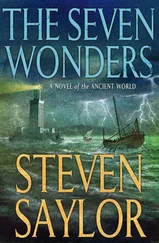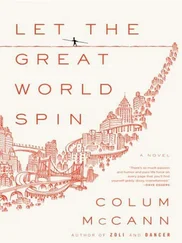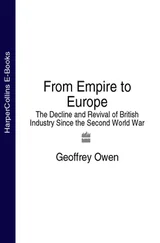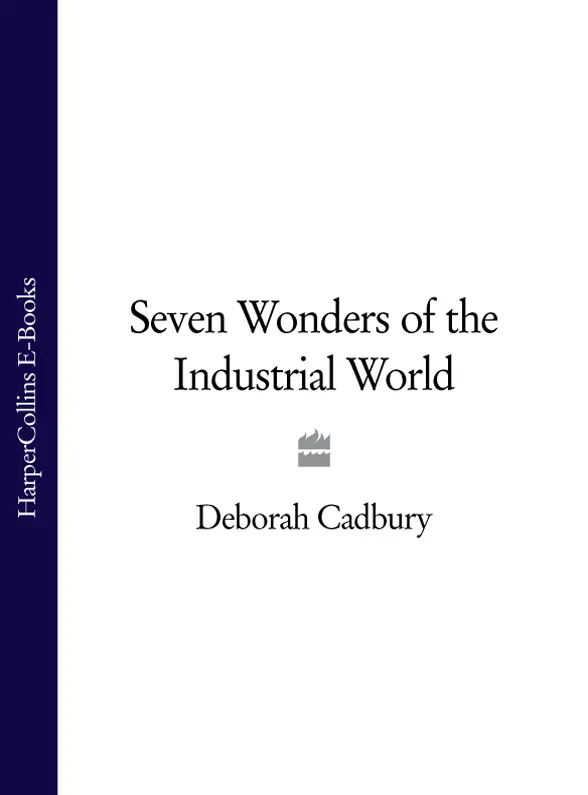
SEVEN WONDERS
OF THE
INDUSTRIAL WORLD
Deborah Cadbury
Cover
Title Page SEVEN WONDERS OF THE INDUSTRIAL WORLD Deborah Cadbury
Introduction
1 The Great Eastern
2 The Bell Rock Lighthouse
3 The Brooklyn Bridge
4 The London Sewers
5 The Transcontinental Railroad
6 The Panama Canal
7 The Hoover Dam
Bibliography and Sources
Index
Acknowledgements
About the Author
Other Works
Copyright
About the Publisher
The great achievements celebrated in this book reveal as much about the human spirit as they do of technological endeavour. The period of over 125 years from the beginning of the nineteenth century saw the creation of some of the world’s most remarkable feats of engineering, now celebrated as wonders of the world, from Isambard Kingdom Brunel’s extraordinary Great Eastern , the ‘Crystal Palace of the Seas’ that he hoped would join the two ends of the British empire, to the Panama Canal, that linked the Atlantic and Pacific oceans in 1914.
The slowly evolving Industrial Revolution was the fertile ground that gave life to these dreams in iron, cement, stone and steel. The pioneers of the age were practical visionaries, seeing beyond the immediate horizon, the safe and the known; taking risks and taking society with them as they cut a path to the future. Yet their unique masterpieces could never have been built without an army of unsung heroes, the craftsmen and workers also willing to take risks as they laboured to bring each dream to life. And as each great scheme unfolded, the financiers and shareholders were there too, caught up in the exuberant process and hanging on for the ride as reputations were lost and won.
The Bell Rock Lighthouse – the oldest ‘wonder’ featured in this book – was created while Britain was in the grip of the Napoleonic wars. In 1807, Robert Stevenson, the grandfather of Robert Louis Stevenson who wrote Treasure Island , started work on the Bell Rock Lighthouse in wild northern seas off the east coast of Scotland. For years he had longed to make his mark on the world, bringing light to the treacherous Scottish coast. He dreamed of taking on the most dangerous place of all: the Bell Rock, a large reef eleven miles out to sea positioned right in the middle of the approach to the safe haven of the Firth of Forth. Over the centuries, this deadly reef, submerged at high tide, had cost so many lives it ‘breathed abroad an atmosphere of terror’ along the whole coast.
Like so many pioneers of the Industrial Revolution, Stevenson had cheap labour available, men desperate for work and often prepared to risk their lives for a meagre wage. This was a time when coal and iron ore were mined by hand and canals were dug with picks and shovels. The cotton factories, railways, shipbuilding: all needed a plentiful supply of labour. The population was rising rapidly, in England and Wales alone from under 7 million in 1750 to 18 million a century later. And because of recent improvements in agricultural husbandry, rich landowners and farmers could now produce more with fewer workers. As the rich enclosed their land and the old medieval field strips worked by a peasant population for centuries disappeared, a new landless class labouring for a wage emerged.
The opportunities of the town beckoned, drawing wave upon wave of willing recruits. During the nineteenth century the major cities grew, doubling and redoubling like cells dividing. Yet at this stage, industrialisation had yet to bring real benefits to the working man. Even after the 1832 Reform Act, a working man had few rights; he was unlikely to qualify for the vote and government sympathies lay with his employers. Just moving to one of England’s growing cities could lower life expectancy, which for a labourer was rarely much more than 35 years, and in some cities, like London or Liverpool, lower still. Many women died giving birth and although there were wide variations, records show that in cities like Manchester almost 60 per cent of children from poor families did not reach five years of age, dying mostly from infectious diseases. The poor often lived in such pitiful squalor; sometimes several families sharing a single room. Wages were low; there were no unions, pensions or social security and no minimum age for labour. Amongst the poorest families everybody was obliged to work: men, women and children.
Children as young as nine or ten were employed in building Isambard Kingdom Brunel’s colossal ship, the Great Eastern , which was built on the banks of the Thames between 1853 and 1858. They were essential, working in the confined space of the unique double hull of this grand ship, heating and handling thousands of white-hot rivets. Horrific accidents were all too frequent but a death simply meant that there was employment for another child and there was no shortage of willing workers. There is a noticeable absence of records though – the names and wages of the unsung labourers not even worthy of a note in the minute books of the great companies or journals of leading men.
Brunel hoped the Great Eastern would be his masterpiece, which would link the ends of the empire. At a time when most ships moored in the Thames were nearer 150 feet in length, built to traditional designs in wood and powered by sail, Brunel’s ‘Great Ship’ was almost 700 feet long, a floating island made of iron, that he envisaged could carry 4,000 passengers in magnificent style as far as the Antipodes without needing to refuel. This ‘Crystal Palace of the Seas’ broke the mould of convention; the design was revolutionary with a double hull that made it unsinkable and powered by enormous engines as high as a house. Every part of the ship’s design had been subject to Brunel’s penetrating scrutiny and so complex was the technology that it was claimed only he understood it entirely. He faced enormous criticism: his ship was too big, it was too expensive, it would sink, or break its back on the first big wave, if, that is, he could actually manage to launch it on to the Thames. In fact, it was the blueprint for ship design for years to come.
As the Great Eastern became the talk of England, people came to gaze in disbelief at its vast proportions as it miniaturised the working world around it. Even Queen Victoria herself was tempted to venture down the Thames to visit the ship that symbolised the ‘moral superiority’ of her empire. Yet records show that as she sailed down the Thames to visit the site she was obliged ‘to smell her nosegay all the time ’. For while Brunel was building his masterpiece, the city was in crisis. London was drowning in a sea of excrement.
There were some 200,000 cesspits across the capital but as the population escalated in the first half of the nineteenth century, so did the smell. In poor districts these cesspits were seldom emptied, leaving the sewage to overflow, seeping through cracks in floorboards or even running down walls, spreading everywhere with its creeping tentacles of disease. Three epidemics of cholera had swept through London by 1854 leaving over 30,000 dead. The desperation of the poor of the East End even reached The Times in a famous protest: ‘Sur, – May we beg and beseech your proteckshion and power … We live in muck and filthe. We aint got no privies, no dust bins, no drains, no water splies, and no drain or suer in the hole place … The Stenche of a Gully-hole is disgustin. We all of us suffur, and numbers are ill, and if the Colera comes Lord help us …’
Читать дальше
